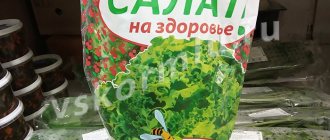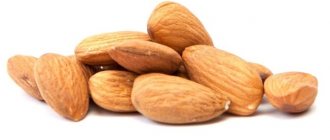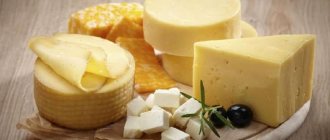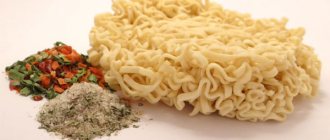Composition and benefits of zucchini
The positive properties and contraindications of zucchini are due to its composition, which contains valuable elements necessary for the normal functioning of the human body (vitamins B, C, A, PP).
| Name of valuable substance | Main action |
| Vitamin A | Improving the functioning of the visual organ, the appearance of hair, dermis, protection against colds. |
| B9 | Strengthening the central nervous system, participation in protein synthesis. |
| B1 | Normalization of metabolic processes, improvement of mood, stabilization of the central nervous system. |
| PP | Normalizes the nervous system, prevents the formation of blood clots. |
| B2 | Protecting the organ of vision from the negative effects of ultraviolet rays, participating in the synthesis of nerve cells. |
| C | Increasing tone, immune qualities, protection against diseases of viral and infectious origin, eliminating depressive conditions, improving mood. |
| B5 | Help in eliminating unwanted kilograms, saturating the body with energy, stopping inflammatory processes. |
| K (potassium) | Stimulates brain activity, saturates cells with oxygen, improves the functioning of the gastrointestinal tract. |
| Fe (iron) | Increasing hemoglobin levels, preventing anemia, strengthening the immune system. |
| Ca (calcium) | Strengthening bones, tooth enamel, stimulating the growth of nail plates, hair, improving the functioning of the cardiovascular and muscular systems. |
| P (phosphorus) | Improving memory, concentration, stimulation of brain activity, saturating the body with energy, vigor, strengthening gums, teeth, bones. |
| Mg (magnesium) | Saturation of the body with energy, protein synthesis, normalization of the central nervous system. |
Useful qualities of zucchini for women during lactation:
- Elimination of unwanted kilograms, prevention of excess weight gain.
- Stabilization of the activity of the central nervous system.
- Saturation of the body with nutritional compounds and energy.
- Normalization of blood pressure.
- Removing excess fluid from tissues and harmful substances from the body.
- Therapy, prevention of diabetes, cardiovascular diseases.
We recommend reading: Is it ok to eat shrimp while breastfeeding?
Zucchini can replace beets, which are more difficult to digest and absorb by the baby’s digestive system. Zucchini peels can be used as face masks to improve your appearance.
The benefits of zucchini during breastfeeding + delicious recipes
Is it possible to have zucchini while breastfeeding? After all, this product is harmless at first glance, and besides, it is recommended to be the first to be introduced into a baby’s diet. But breastfeeding is a very responsible process, and any mother is afraid of eating something wrong and harming her baby.
Beneficial features
Can a nursing mother eat this vegetable? Zucchini is the product that a woman during lactation is recommended to introduce into her diet first without fear. It is useful for both mother and baby. Zucchini very rarely causes an allergic reaction (but there are exceptions) and gastrointestinal disorders. It is perfectly digestible.
Advantages of the product over others:
- It is a source of microelements and various vitamins. The vegetable contains vitamins A, C and B in large quantities. After childbirth, these substances will help a woman restore her hair, skin and nails. In addition, they are extremely necessary for the baby to fully develop.
- The product is rich in microelements such as calcium, magnesium, iron and potassium. Without them, a fragile organism will not develop either.
- The vegetable perfectly removes toxins, improves blood circulation and digestion.
- Many mothers are left with extra pounds after childbirth. Zucchini, regularly present on a woman’s menu, will help you quickly say goodbye to them. Dishes made from it are low in calories. Since the product is easily digestible, the figure with its constant use is transformed before our eyes.
But everything should be in moderation, and zucchini too. With all its advantages, the vegetable in large quantities is capable of removing not only excess water from the body, but also useful elements, since it has a diuretic effect. In addition, the product in large quantities can provoke the development of problems with the cardiovascular system.
How to properly include in the diet during breastfeeding
Zucchini can be introduced into the diet of a young mother from the first week after birth. But the product should be given heat treatment. Raw vegetables should not be consumed. It is better to stew or boil zucchini.
For the first time, 1 tbsp is enough. l. stewed or boiled zucchini. On the first day, you need to monitor the baby so that he does not have a reaction to the product. If this does not happen, then you can safely introduce zucchini into the menu of a nursing mother.
What should you pay attention to when choosing a vegetable? The following points need to be taken into account:
- You need to purchase the product only during the season. This way mom will avoid unnecessary nitrates in the vegetable.
- When choosing a zucchini, carefully check that it is free of dents and stains.
It is better if the vegetable is grown in your own garden. But, unfortunately, not everyone has such an opportunity. It is also necessary to consider recipes from this healthy vegetable for young mothers.
Cream soup
Zucchini soup-puree for a young mother will have a very good effect on the body.
To prepare it you need to arm yourself with:
- 1 zucchini;
- 150 ml milk;
- 1 tbsp. l. flour;
- 1 yolk;
- 200 ml vegetable broth;
- 50 g butter;
- salt to taste.
Cooking steps:
- The vegetable is washed, peeled and cut into slices.
- Heat the oil in a frying pan, add zucchini and milk to it.
- Simmer the mixture over low heat for 10 minutes.
- Next, beat the mixture with a blender until smooth.
- Then the flour is fried and, when it has cooled, diluted with vegetable broth.
- The resulting white flour sauce is combined with whipped zucchini and mixed thoroughly. The puree soup is ready!
Casserole
Zucchini recipes aren't limited to just soups or stews. You can also prepare a delicious casserole. But it contains tomato, so the dish is suitable for those nursing mothers who are convinced that tomatoes do not cause allergies in the baby.
The casserole is prepared like this:
- Take 100 g of rice and soak it in boiling water for 15 minutes.
- Next, 700-800 g of zucchini is crushed on a coarse grater.
- The vegetable is salted and excess liquid is squeezed out of the pulp.
- Take tomatoes (2 pcs.) and cut into thin rings.
- Next, beat 2 chicken eggs with grated cheese (50 g is enough).
- Drain the water from the rice and add 300 g of minced meat (any meat).
- The zucchini is placed in a mold, tomatoes and a mixture of minced meat and rice are placed on top.
- Grease the casserole with a mixture of eggs and cheese.
- Bake the dish in the oven for 30-40 minutes.
The above recipes will appeal not only to the nursing mother, but also to all family members!
Our video will tell you about the beneficial properties of zucchini.
by HyperComments
Harm to the product during hepatitis B
Despite the impressive list of positive qualities, zucchini can negatively affect the body of a nursing woman or baby. Product harm:
- Abuse of zucchini can lead to heart problems due to its diuretic effect.
- Eating raw fruits or zucchini juice helps stimulate the secretion of gastric juice.
- When large portions of this product are included in the diet, allergies, colic, stool disorders in infants, and digestive disorders in nursing women may occur.
Such unpleasant signs can be avoided if you eat cooked vegetables in moderation.
Is there any harm from zucchini?
Despite the fact that zucchini has many useful qualities, a nursing mother does not need to consume it too often, since the vegetable can also have a negative effect on her body. This is due to the fact that the product (together with cucumber) is one of the most powerful diuretics. The vegetable removes from the body, in addition to toxic substances and toxins, useful and vital elements, such as potassium. A deficiency of this substance can cause heart failure and other serious ailments. Other health problems may arise when eating zucchini:
- the occurrence of pain in the epigastric region (they can be caused by the acid contained in raw vegetables);
- the appearance of diarrhea in the mother, intestinal colic, bloating and liquid foamy feces in the baby;
- the occurrence of allergies (due to the consumption of low-quality vegetables).
Rules for eating zucchini during lactation
This product can be used a week after the birth of the baby. However, the dish must be boiled or prepared by stewing. Once your baby reaches three months of age, you can experiment with introducing new dishes.
To begin with, you should try 1 - 2 tbsp. l. stewed vegetable, then for a couple of days. A nursing mother should monitor the baby's reaction. However, you cannot introduce other new dishes. This will help determine what exactly the allergy is to (if there are negative manifestations). If the baby feels well, further use of the product in question is allowed with a gradual increase in the serving size. However, you shouldn't overeat. Eating large amounts of zucchini can cause heart problems, and you should also avoid eating the vegetable raw. You are allowed to eat homemade squash caviar in moderation.
In what form can zucchini be eaten while breastfeeding?
As mentioned earlier, for the first three months, zucchini can be eaten stewed or boiled.
Then you can eat it fried and baked. There are many recipes for cooking dishes with zucchini. Vegetable stew is the best option for a nursing mother. When the baby is three months old, you can stew cauliflower, potatoes, and carrots with zucchini. These vegetables are safe for babies in small quantities.
It is useful to steam vegetables (in a double boiler) or bake them in the oven. With this processing they retain their beneficial properties. Occasionally, you can fry the zucchini in a dry frying pan or grill it. This is a less healthy dish, but more tasty. Zucchini pancakes add variety to your diet.
Remember not to eat raw zucchini!

One of the interesting options is squash caviar. Caviar can be used as an additive to soups or main courses. It's better to cook yourself. Store-bought caviar contains chemical additives that are very harmful to the baby.
However, zucchini game should be consumed with caution, as it contains vinegar and tomato paste. Therefore, it is better to add the product to the diet 5-6 months after the birth of the baby.
The permissible dose is no more than 150 grams per day and 400 grams per week.
Selection of zucchini
When choosing a vegetable, you need to pay close attention to:
- Surface. There should be no damage, dark spots, mold, or signs of rotting on it. A high-quality product has an elastic structure and smooth skin.
- Coloring. It should be uniform - from light yellowish to marsh green.
- Length. It is advisable to purchase small fruits (about 25 – 30 cm in length).
We recommend reading: Is it possible to eat lemon while breastfeeding?
It is better to make dishes from home-grown zucchini. Thus, a nursing woman will be confident in the freshness, quality of the product and the absence of harmful compounds in it (nitrates). In stores and markets you should purchase only seasonal products. Before production, the fruits must be washed well and rinsed with boiling water.
Why it is not recommended to eat zucchini in the first three months
Similar restrictions are imposed mainly on raw zucchini and juice from them. Organic acids contained in the pulp and juice of zucchini are irritating to the infant’s immature gastrointestinal tract. In addition, many zucchini dishes contain spices, garlic and various seasonings, because zucchini itself tastes rather bland. Squash caviar, for example, is not recommended for nursing mothers in the first three months.
The seeds contained in the core of zucchini cause bloating in the intestines of infants, but this can be completely avoided. I usually always scrape out the middle of the squash with a spoon, especially if it is large and mature. When the zucchini is young, there is no need to peel anything, since there are practically no seeds in it.
Zucchini fritters
Required components:
- egg;
- ½ kg of zucchini;
- pepper, salt, herbs (to taste);
- 3.5 large l. decoys.
Actions:
- We wash the vegetable and grate it on a grater with large holes.
- Squeeze out the resulting mass from excess liquid, mix with finely chopped herbs and egg.
- Add semolina, pepper, add salt to taste, and mix the ingredients thoroughly again.
- Leave the mixture for 1/3 hour for the cereals to swell.
- Steam the dish, forming pancakes.
Steamed zucchini pancakes are served with sour cream. During lactation, it is not recommended to consume this dish fried.
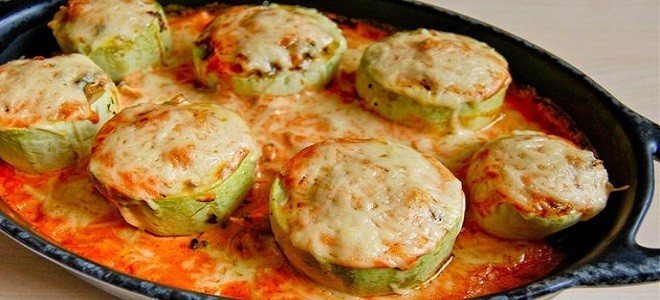
Zucchini stuffed with meat
To prepare zucchini stuffed with meat filling, you will need:
- a couple of medium-sized zucchini;
- breadcrumbs;
- 0.4 kg minced meat;
- a piece of butter;
- pepper, salt (to taste).
Manufacturing steps:
- Cut the washed vegetables in half (lengthwise) and remove the core.
- Steam until partially cooked.
- Combine the minced meat with softened butter, put the resulting mass into half-raw zucchini, pepper and add salt (to taste).
- Sprinkle breading mixture on top.
- Distribute the preparations among the baking dishes.
- Place the pan in a hot oven.
- Cook the zucchini until the meat is fully cooked at 180°.
The dish is ready.

Stewed zucchini
Required Products:
- carrot;
- a couple of large l. tomato paste;
- a couple of medium-sized zucchini and tomatoes;
- salt, pepper (to taste);
- bulb;
- vegetable oil.
We recommend reading: Salads for breastfeeding
Actions:
- We wash the zucchini, then remove the skin, seeds and cut into cubes.
- Finely chop the peeled onion, grate the carrots on a grater with large holes.
- Cut the washed tomatoes into small slices.
- Place chopped vegetables (onions, carrots) in a hot dish for frying with oil.
- Sauté for about 10 minutes. over medium heat, stirring.
- Next, add chopped tomatoes, zucchini, tomato paste, and combine the ingredients.
- Leave to simmer for another half hour in a closed container, without reducing the heat, stirring the mixture periodically.
- At the end of cooking, pepper and add some salt to the mixture.
The dish is ready.

Casserole
When preparing the casserole, tomatoes are used, which is a fairly allergenic product. Therefore, before preparing it, you should make sure that there is no harm to the baby. Or simply exclude this ingredient from the list. To prepare, do the following:
- 100 gr. Soak rice in boiling water for a quarter of an hour.
- 600-700 gr. Grate the zucchini on a coarse grater, add salt and lightly squeeze out the excess liquid.
- Cut 4 tomatoes into rings.
- Beat 2 eggs with 50 gr. grated cheese.
- Drain the water from the rice and mix it with 300 gr. any minced meat.
- Place the zucchini in a mold, place the tomatoes on top, then add a mixture of rice and minced meat.
- Brush with prepared mixture of cheese and eggs.
- Bake for about half an hour.
The prepared casserole will please everyone in the household and will bring many health benefits.
We invite you to familiarize yourself with a bouquet for a man on February 23: an original do-it-yourself gift
However, there is a small nuance here: doctors recommend increasing the volume of fluid consumed daily not immediately after childbirth, but gradually. In the first days after birth, lactation is just establishing and drinking large amounts of water threatens lactostasis, therefore, moderation is everything!
